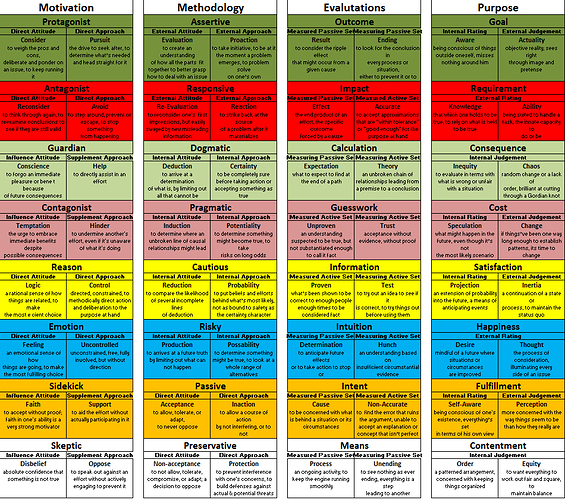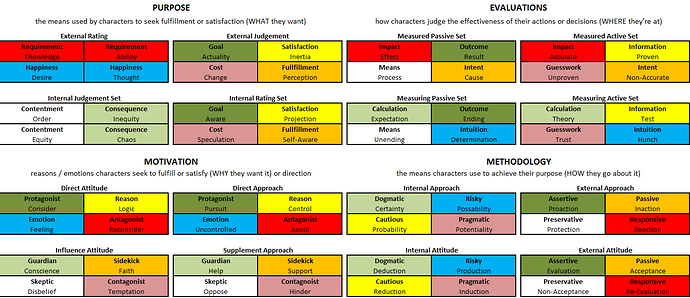It’s quite easy to get a hang of how the Motivation Elements relate to the Archetypes: there’s really nothing too obscure about why the Skeptic disbelieves and opposes, or why the Reason is logical and controlled. But how the archetypal pattern works in the other three character dimensions is a lot more difficult to get a good grasp of.
I don’t know if it’s because the theory book so thoroughly explains the archetypes through their motivations without touching the other dimensions, or if characters’ motivations tend to be the dimension writers usually develop the most, but somehow I’ve been conditioned with this bias that the Motivation set is more special than the others, which bugs me a lot cause I know it would be hugely beneficial to understand the Archetypes without such biases. I think having a more developed picture of the Archetypes would open up a lot of doors in creating complex characters, for example: “hmm… I’ll swap the Skeptic’s Evaluation elements with the Sidekick’s in order to have an effect X.”
It’s relatively easy to give characters individual Elements from here and there, but I feel like some in-depth understanding is missing without knowing how the chosen Elements relate to their Archetypes; it easily starts to feel like a mess, especially with screenplay as the medium – there’s hardly enough time to tell a complete story using only Archetypes. Picking Elements haphazardly is a whole another layer of headaches.
So, would it actually be possible to somehow “explain” why, for example, Reason “Trusts a Theory” in order to get a better picture of Reason as an Archetype? I think the theory book itself mentions something about a thorough analysis of all the dimensions being outside of the book’s reach, which I understand. But would it still be possible to explore the other dimensions in a form of a discussion without it turning into a thousand page analysis? Or to put it another way: could the chapter about archetypes just as well have been written from the point of view of Evaluations, Purposes, or Methodologies?
“Luke Skywalker’s Methodology is to do only what is absolutely Certain while being Proactive.”



